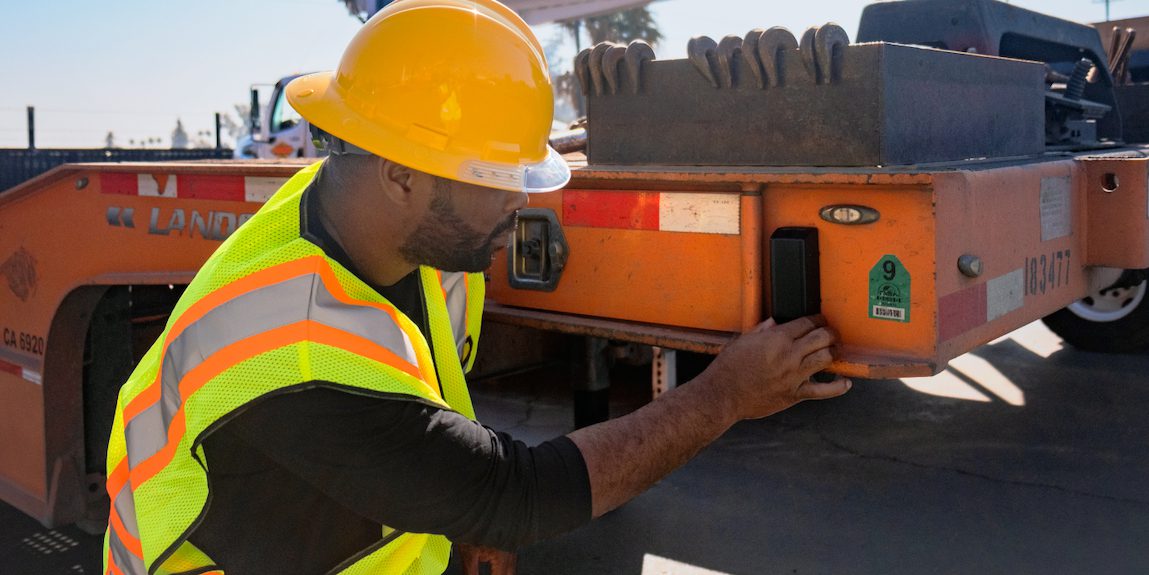

Telematics is a quickly evolving technology transforming the way construction companies oversee and manage their assets.
A high-tech combination of information technology and telecommunications, telematics enables real-time data collection, analysis, and transfer. Hardware components like GPS trackers are often connected and integrated with telematics systems for improved data analysis and functionality.
If you are a fleet manager for a construction site or run an equipment rental business, telematics is the best way to optimize your operations and improve your workflow. This article will look at what telematics is, how it works and how it can benefit the construction industry overall.
In recent years, construction and rental companies have integrated telematics into their fleet management strategies. With telematics technology, businesses can track and monitor their assets’ location, activity, and maintenance status in real time.
With telematics data, fleet managers can gain access to important information about vehicle diagnostics all from a single software platform. Instead of multitasking multiple software at once and trying to juggle assets across different job sites, software like Trackunit enables teams to streamline workflows and improve productivity.
GPS is a crucial integration for telematics systems that use geo-tracking, like Trackunit. Geo-tracking allows teams to pinpoint the precise location of their off-road vehicles and equipment remotely. Trackunit helps fleet managers know where their assets are at all times for better transparency.
When a piece of equipment breaks down, teams can locate the vehicle, service it, track maintenance progress and deploy it for decreased downtime. Construction teams can be on the job longer, resulting in faster timelines and turnaround.
Telematics systems work through a combination of hardware, software, and wireless communication technologies. The process involves collecting, transmitting, and analyzing data from vehicles and equipment to provide valuable insights and enable remote monitoring and management. Here’s a simplified overview of how telematics systems work:
To gather data, telematics systems use a range of sensors and equipment placed in vehicles and machinery. These gadgets often include GPS devices, accelerometers, motor diagnostic sensors, and more.
They collect data on variables like location, equipment status, and equipment use and send updates to a data storage cloud in real time.
The vehicles and equipment wirelessly transmit the collected data to a centralized computer or cloud-based platform, often a fleet management software system like Trackunit. Typically, wireless networks or communications satellites are used to help make the transfer easier.
The data is stored and processed for analysis once it has reached a centralized computer or cloud-based platform. To interpret the data and produce valuable insights, telematics software makes use of algorithms and analytics tools.
This analysis involves recognizing patterns, trends, and any irregularities in order to provide useful data on fleet performance, maintenance requirements, etc.
The parts needed in a telematics system include various hardware and software components that make it possible to transmit, and analyze data about the equipment a company has. This way, software systems can increase decision-making, increase operational efficiency, and give businesses real-time visibility.
A crucial component of the telematics instrument is the GPS receiver. In order to pinpoint the exact position of the equipment, it receives signals from GPS satellites. As a fundamental component of telematics systems, the GPS receiver provides precise and real-time location data.
A satellite communication part sends data from the telematics device to the main computer or cloud-based platform. While satellite components rely on satellites in regions with patchy cellular coverage, cellular modules can use a data connection using cellular networks to do the same instead.
The telematics device can send data, such as location data, equipment diagnostics, and other important measurements, to the main computer because of these communication modules.
A telematics system’s software components are essential for processing, analyzing, and presenting data from the hardware devices. Thanks to these software components, fleet managers and operators can access real-time information, keep an eye on assets, produce reports, and make decisions based on data.
Telematics has blended into our daily lives, working in the background to increase productivity, security, and convenience, even for non-construction industries. This technology is now used across various sectors, including fleet management, logistics, and transportation.
Telematics systems make a big difference in the safety of construction sites. Trackunit software for example improves equipment safety by only allowing authorized users access to equipment. This ensures that all equipment operators are well trained professionals who will avoid damage to company equipment and property. Proper handling of vehicles and equipment reduces the potential for damage and accidents.
Telematics data can then be applied to improve overall safety standards and address risky behaviors through driver education and training programs. Telematics systems also offer helpful insights into compliance with legal requirements.
This is useful for construction and off-road vehicle rental companies as it ensures the safety of drivers and assets.
Construction companies can now monitor their assets in real time using telematics systems. GPS tracking enables accurate location monitoring, which reduces theft, maximizes equipment use, and boosts overall operational effectiveness.
Telematics also enables businesses to monitor location, maintenance requirements, and equipment usage remotely to ensure maximum efficiency.
Fleet tracking software like Trackunit uses geo-tracking, allowing fleet managers to monitor the movement and use of their vehicles. Geo-tracking enables managers to demarcate virtual zones for their assets. Trackunit provides notifications when vehicles enter and exit the zones.
Telematics systems collect real-time data from construction equipment to provide proactive maintenance management. This information includes metrics for performance and usage patterns.
Fleet managers can schedule servicing and receive maintenance alerts by analyzing this data before any significant problems develop. This predictive maintenance boosts equipment durability, lowers repair costs, and helps prevent breakdowns.
By integrating hardware devices and software programs, telematics systems gather and process a wealth of data, such as vehicle location, speed, fuel consumption, maintenance data, and driver behavior.
The analysis and translation of this data into useful insights allow fleet managers to develop practical strategies of action and carry them out to maximize their work and profits.
If you want to harness the power of telematics for your fleet, request a demo with Trackunit today.

